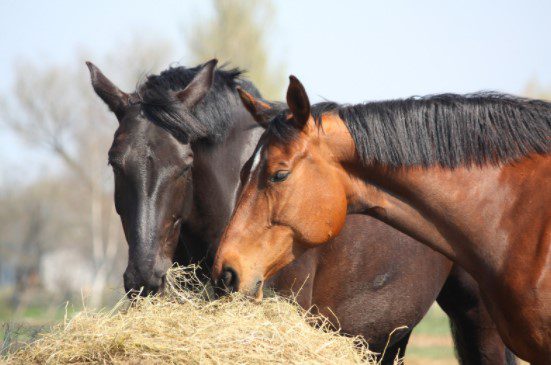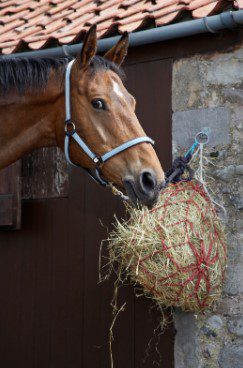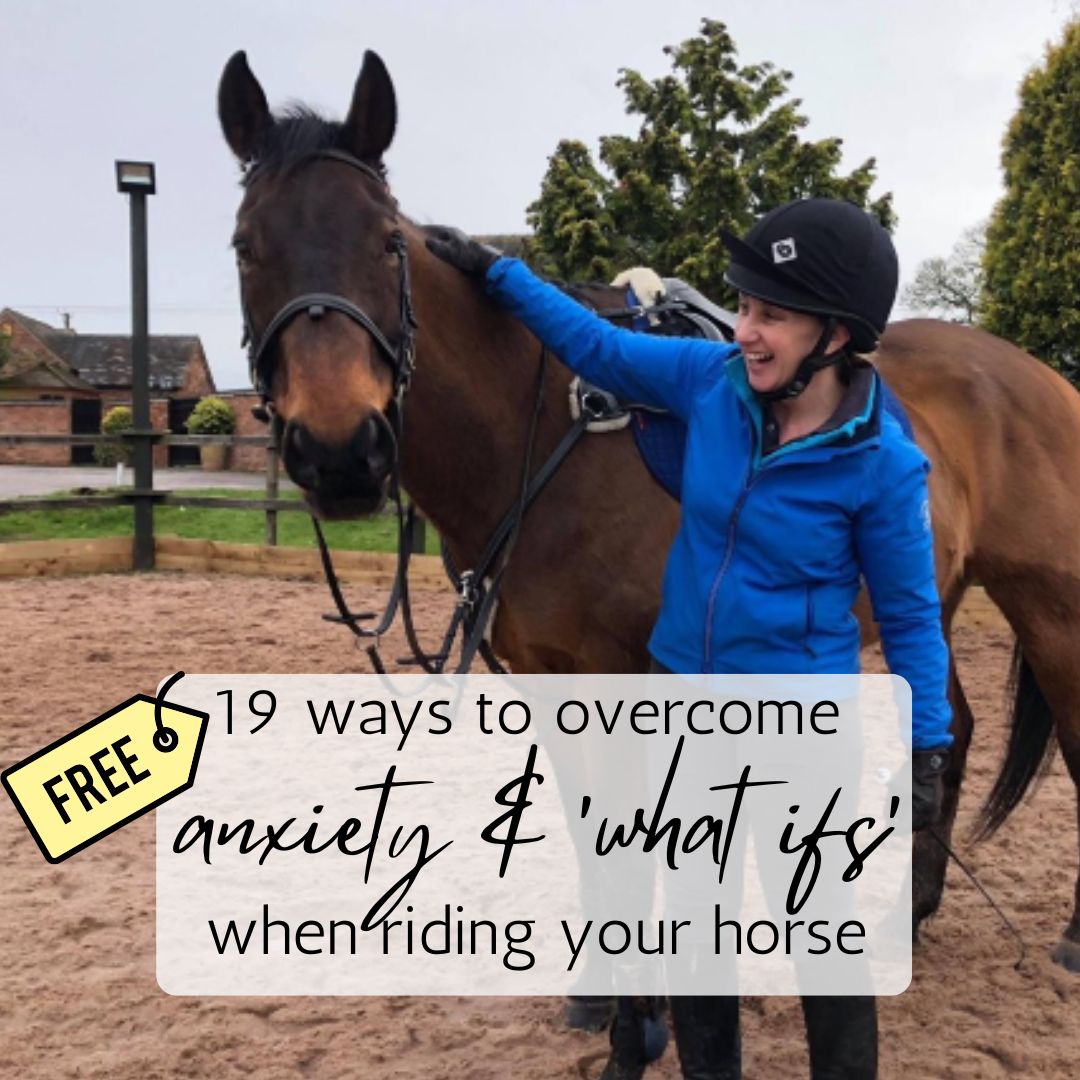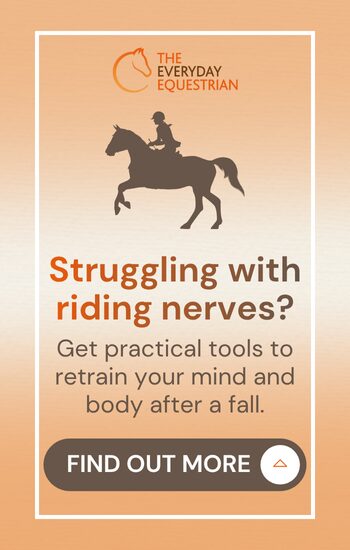
There are always lots of questions surrounding the subject of feeding horses and one of the most common I hear is ‘which type of hay should I feed my horse?’ This is a very valid question since it factors into a large proportion of a horse’s diet. When we hear horse owners talking about the right type of feed for their horse they will often be referring to concentrate or hard feeds such as pasture/competition mixes or similar. It is true that feeding your horse the right type of concentrate is important (if they need this in their diet) however, I would go as far as to say it is even more important to feed your horse the right type of hay.
Why is hay so important for horses?
As mentioned previously ‘hay’ is a huge factor in the horse’s diet. You will likely be feeding them more of this than any other foodstuff. Finding the right type of hay is vital for the following reasons:
- Provides bulk (roughage) to the horse’s ration, particularly when access to good quality grazing is limited.
- High fibre keeps the horse’s digestive system working efficiently.
- Known as long-stem fibre which takes a significant amount of chewing (when compared to hard feeds), stimulates saliva production and helps control the acidic environment of the stomach.
- Lots of chewing also calms and satisfies the horse, mirroring natural trickle feeding behaviour.
As you can see there are many benefits to feeding hay to horses, however, this is only the case if you are offering them good quality hay, to begin with. Poor quality hay is pretty easy to come by and if you don’t know what to look out for it is easy to be swept along by cheap prices and false advertising.
What should you look for in good vs poor quality hay?
When purchasing hay for your horse it is always best to be in the know about what is good and bad quality. Check out the table below highlights some of the differences:
What to look out for |
Good Quality Hay |
Bad Quality Hay |
Smell |
Good quality hay has a sweet, clean and pleasant smell. | Bad quality hay often has a tangy, musty smell and is quite often damp or mouldy smelling. |
Feel |
Good quality hay should be dry and crispy to touch. You will notice it has a very fresh feel about it. | Bad quality hay can often be limp to touch since it is usually damp or wet. Some really bad hay can almost be slimy to touch. |
Colour |
Hay colours can vary quite considerably, but you should look for hay that appears a greenish-brown colour or golden brown. | Very green hay is too new to feed and must be avoided since it will cause digestive problems. Dark brown or black hay must also be avoided. Hay with black and white areas is known as ‘mowburnt’ which is essentially hay that has overheated and has been bailed before the stems are dry. |
Content |
It is always wise to have a good look at the actual content of the hay. Is it mostly pure or does it contain other bits such as poisonous plants? | Bad hay usually contains inferior grasses, weeds and even poisonous plants! It’s hard to believe anyone would actually be selling hay to horses with contents like this, but it happens. Frequently! |
Dust |
Good quality hay will be as free of dust as can possibly be. | Bad quality hay will almost always be dusty and powdery. |
Taste |
Good hay should have a chewy texture and will taste lovely and sweet. Horse’s will find the good stuff very palatable. | Inferior hay will often be very bitter with a sour taste. It can also be very musty. There are many horses however that will still wolf down this type of how and just as many that will refuse to eat it. A bit of a mixed bag and will vary from horse to horse. |
As you can see there are many things to look out for here and it should be quite easy now you have this information to be able to successfully identify good and bad hay.
What types of hay are available to buy in the UK?
There are two types of hay that can be purchased throughout the UK that are both suitable for consumption by horses providing they are of good quality. Let’s take a closer look at both types, how they are produced and the pros and cons to consider.
Seed hay
Seed hay is sown as an annual crop and consists of top quality plants such as ryegrass. It is usually free from weeds and poisonous plants and is much tougher than meadow hay. Seed hay is very nutritious and very suitable for horses that are in hard work however it is fair to mention that it can be difficult to digest especially if it is new hay. Seed hay and renowned for being more expensive than meadow hay due to its high quality however you can expect to store for at least 6-12 months before use.
Pros
- Contains top quality plants
- Free from weeds and poisonous plants
- Long storage life (6 – 12 months)
Cons
- Difficult to digest (especially new hay)
- More expensive than meadow hay
Meadow hay
Meadow hay is cut from natural pasture which usually means it contains a greater variety of plants than can be seen in seed hay. It is also a lot greener in colour. You shouldn’t rule out meadow hay containing poisonous plants and you should choose very carefully if selecting this type of hay for your horse. Make sure you have a good look before feeding. This type of hay is softer and sweeter than seed hay since it is allowed to go to seed before cutting. Most horses find meadow hay very palatable. It is the less expensive out of the two to buy and can be stored for 6 months before being fed.
Pros
- Softer and Sweeter than seed hay
- Most horses find this hay very palatable
- Cheaper than seed hay
Cons
- Can contain weeds and poisonous plants
- Cannot be stored as long as seed hay
For more information and support on how to care for horses, check out my horse management training programmes below.



